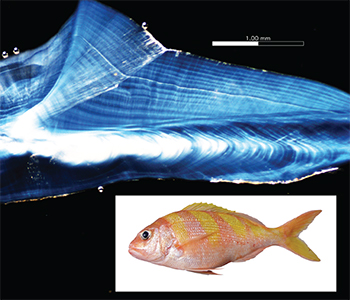Say what? Fish have ears and people study them?

Fish have ears, and within the ears of bony fishes are tiny calcified structure known as otoliths, or fish earstones. These tiny structures hold the key to the aging, growth and movements of fishes, vital information for fisheries. These structures are like an onion, and when sectioned (cut) correctly, reveal growth rings much like the cross-section of a tree. This enables scientists to count the rings to get the age of a fish (both daily and annual age), growth of a fish per year as well as the movements of fishes using microchemistry analyses.

Every four years, an international conference (aptly named the International Otolith Symposium, IOS) is held and is the largest conference for otolith researchers around the world. This year, the 6th IOS was held at the National Museum of Marine Science and Technology in Keelung, Taiwan in mid-April. It was a huge success, with ~240 otolith researchers from all over the world sharing their research via oral presentations, poster sessions and discussions throughout the week.
Joyce Ong, a postdoctoral researcher in Dr. Malin Pinsky's lab, was one of the many otolith enthusiasts who attended the symposium and was involved as a helper during the conference as well as one of the organizers of the student event held on the first day. Dr. Ong gave an oral presentation on the use of a sclerochronological method of age validation for a deep-water snapper, Pristipomoides zonatus, in the Indo-Pacific region. This is useful because tropical and deep-water fishes are typically data-poor, hence this method would be a faster and cheaper alternative to traditional age validation methods, especially for fisheries agencies in developing countries.

This work is part of a collaboration between Rutgers University, NOAA Pacific Islands Fisheries Science Center and the Department of Fisheries in Western Australia. The collaborative group aims to publish their work as a special issue (linked to the conference) in the journal Marine and Freshwater Research. From the conference, Dr Ong received good feedback after her presentation, which resulted in the sharing of her methodologies and analyses to researchers from New Zealand (National Institute of Water and Atmospheric Research), Australia (University of Melbourne and University of Adelaide), Poland (National Marine Fisheries Research Institute), Portugal (Marine and Environmental Sciences Centre) and Denmark (Aarhus University).

May 2018


